Carlos Domingues, a very famous journalist in Venezuela, described Kevin Kelsy after he scored his first professional goal back in 2022 at Mineros de Guayana as: “a player that we don’t regularly have” and one that Venezuela has needed for quite a long time.
A striker of his profile is certainly strange in Venezuela — tall and powerful to play with his back to the goal and running into space, but mainly, with composure to score.
The first image that comes to Venezuelan and football fans when the country and position are mentioned is Salomón Rondón. Experiences through Málaga, UD Las Palmas, Rubin Kazan, Zenit, and, especially, those at Newcastle United and West Bromwich Albion gave Rondón one of the most prominent careers a Venezuelan player could have in all their history, remaining in Europe throughout his peak, scoring goals in the Premier League.
Now playing for River Plate at 34 years of age, Rondón is not close to the form he once showed at Newcastle but still shows his hierarchy and leadership with the National Team, as well as adapting to the Argentinian league, which is not easy.
However, until this year, his long-term replacement, thinking specifically about his playing style and profile, one that brings a lot in South American World Cup qualifiers (examples as Paolo Guerrero, Luis Suárez, Marcelo Martins, Enner Valencia), wasn’t a clear one. It wasn’t until Kevin Kelsy arrived at Shakhtar Donetsk and started to score goals that Venezuelans began to ask for his name in the national team.
In the form of a tactical analysis, this scout report explores how Kevin Kelsy plays, and how he fits inside the tactics of Venezuela + Shakhtar. This analysis takes into consideration various parts of his attacking game and also goes deep into data.
Profile and history
At 17, Kevin Kelsy started regularly in Mineros de Guayana’s XI one year and eight months ago, but it wasn’t until April that he scored his first professional goal. There, he drew a lot of attention from scouts and analysts. His height, link-up play, and movements to detect spaces to run were some of the things that stood out at the moment.
The critical moment for Kevin Kelsy arrived at the U-20 World Cup South-American qualifiers, where the Venezuelan striker, after an excellent season in Liga FUTVE, didn’t have the best performances under a team that was coached at that moment by Fabricio Coloccini.
Surprisingly for many, Shakhtar Donetsk quickly made Kelsy’s signing official after that tournament. Clearly, they weren’t bothered by his national team performances, with the Ukrainian side having followed his profile and attributes shown in the league.
Just 11 days after leaving the qualifiers, he was scoring the winning goal in the penalty shoot-out for Shakhtar, winning a lot of confidence that was then gainful by his manager, giving him more minutes from the bench or starting regularly at the XI. After arriving at Shakhtar in January, he ended the season scoring six goals in 563 minutes.
He has started this season on the bench but scored a fantastic header on his UEFA Champions League debut against Porto, which made Venezuelan fans call even more for him to be on the NT squad. At the moment of writing, he hasn’t received the call.
Link-up and back-to-goal ability
Kevin Kelsy stands at 193cm and has a mighty physique that allows him to be a focal point of Shakhtar’s direct possessions. He looks to skip several stages of the attacking phase with long passes from deep for Kelsy to fight against the rival’s defenders. He manages a big jump and technique not to make fouls with his arms, containing the opponent at his back and then directing passes with his head well.
However, not only does his head win these kinds of duels, but he also uses his chest to pass to closer teammates. What stands out is how he can use his body to block the defender’s angle and win most of these battles.
He’s intelligent enough to pin the defender, making steps back and then forward, to win more space and time to receive or to drag the centre-back and make that spaces behind that teammates can take advantage of if they’re activated in behind, or even himself by turning and running into it, but his space-detection will be something to talk about in the next section.
He must keep his link-up ability maturing as the intentions shown are very positive. He’s able to drop very deep into midfield, dragging the defender into that height, creating a lot of space with the movement, and then did well to decide on the following action when receiving.
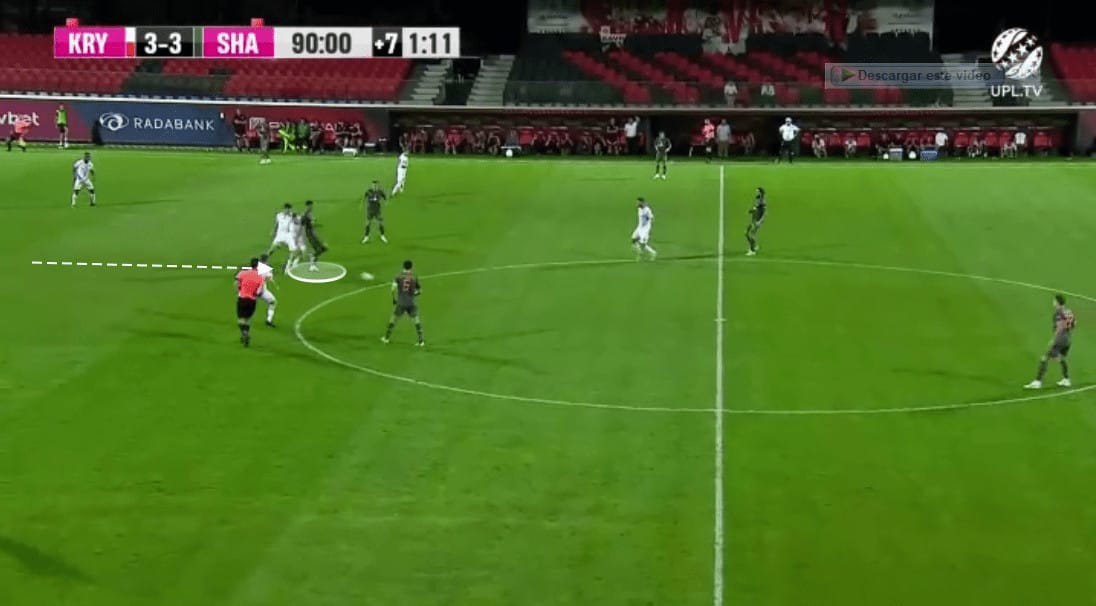
Kelsy manages a decent first touch; however, when he doesn’t control the ball in the best way, he’s intense to get the ball back or shield it with his robust build, looking to maintain possession and not cause losses for his team with it; it is a precious attribute as he doesn’t let one ball be lost for his team, and his body helps him a lot to even win fouls in situations where the angles to escape weren’t the easiest.
In loose duels, he’s brave to get into them, looking to win the first ball, and even after it, if the ball bounces close to him, he prints a lot of energy to end the action with a solid pass into a closer teammate.
Closer to the penalty box, he orients his body well to link up in different ways, returning it to the teammate who just released the ball or progressing down with one-twos and penetrating the box with short passes in tight spaces.
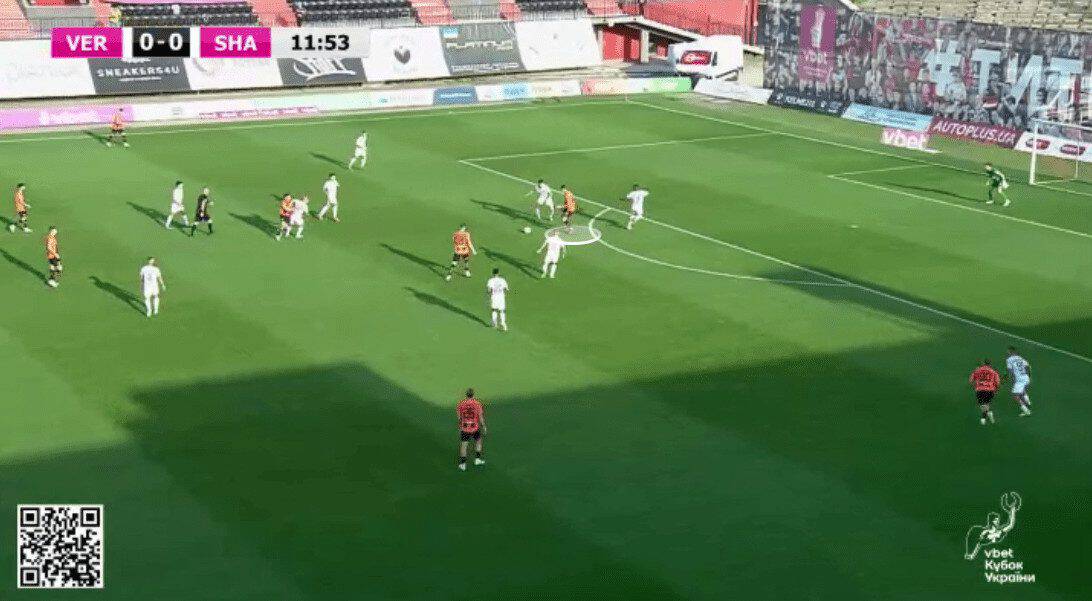
Kelsy’s first touches are positive and show good weight when he generates passes without controlling the ball first. Usually, his actions aren’t heavy.
However, he must improve his intentions closer to the box when linking up, as at times, he can be too hurried on sending teammates into space with back-heels or first-touch passes. This, as in Venezuela, the direct style is very established since the youth categories, especially to centre-forwards of Kelsy’s style.
At certain moments, the play asks him to give one or two touches to the ball and then decide on the next action. If he could work on the tempo of these actions, he would grow a lot, not at the edge of the box but at different heights where he could recognise better when to slow down and accelerate plays.
For example, the figure below shows a very good first touch with the back heel in Shakhtar’s game against Porto, where it can be seen that his link-up technique is solid, and at this time, his teammates read the play well. Nevertheless, it is routine to see him making passes into those spaces too quickly for the players to run in, as he didn’t hit the right timing.
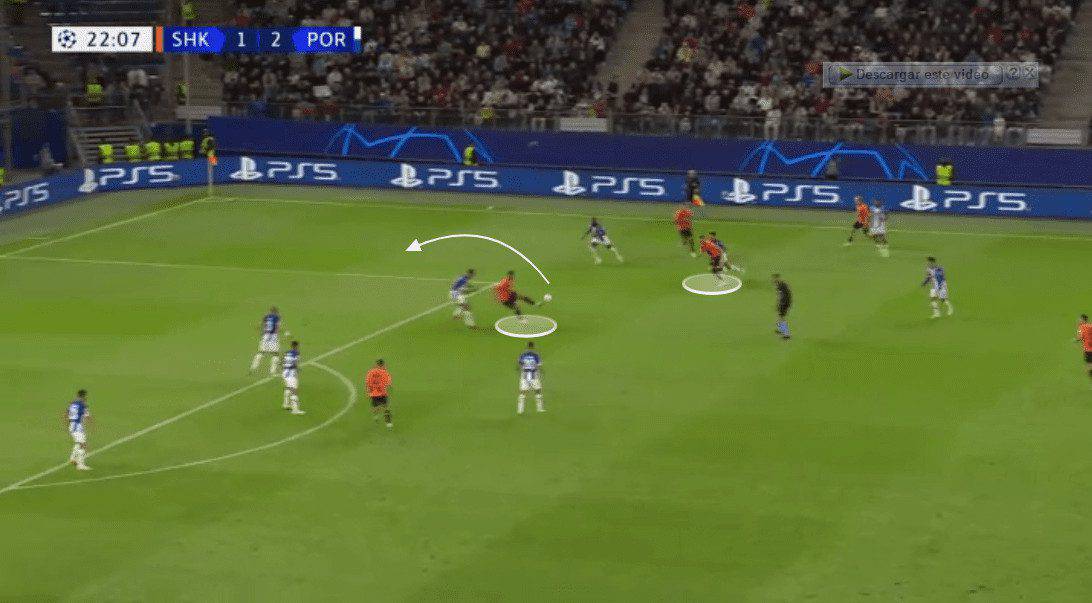
In conclusion, Kelsy manages a very good link-up and hold-up play ability, winning aerial duels, dropping deep, and also creating chances for his team at the edge of the box, but it’s clear that he has to find the right timing to progress with these executions, something that in Europe he will indeed find in the best way possible throughout the years.
Off-the-ball movements and finishing technique
Kelsy’s space detection and intensity to generate diagonal runs is one of his best attributes to impact in the attacking phase. He showcases a variety of movements and runs, with some of them regular traits in his game style and others that he generates occasionally; however, the energy to make these runs behind or inside the box shows his incredible intuition and the timing to make these passing lanes.
In the same way, he’s wise to create passing lanes in deeper zones or tight spaces to link up with his teammates, and he also makes these threatening runs to push the back line and exploit spaces left between the rival’s defenders.
From short to long runs, exploiting spaces between CBs and CB-FB, but also showing excellent movements inside the box Kelsy can offer off-the-ball when looking to be more direct in his team’s possessions.

Close to the penalty box, Kelsy manages energy and quick reactions to spot these spaces, being clever to point out the right zone to his teammates to receive the pass where he wanted to.
There, he shows a fast stride but, firstly, a regular movement in his dismarking runs, a rounded run before the decisive run, dragging the defender to one side and then changing his rhythm to leave behind the opponent and open the space.
It’s a challenging dismarking run to defend, as Kelsy looks to attract them with silent steps, getting away from the ball-holder, then running rapidly into the other side, trying to receive with more space and time so he can shoot quicker. This movement is typically seen closer to the box, primarily because of the time he wins to get a better shooting angle.
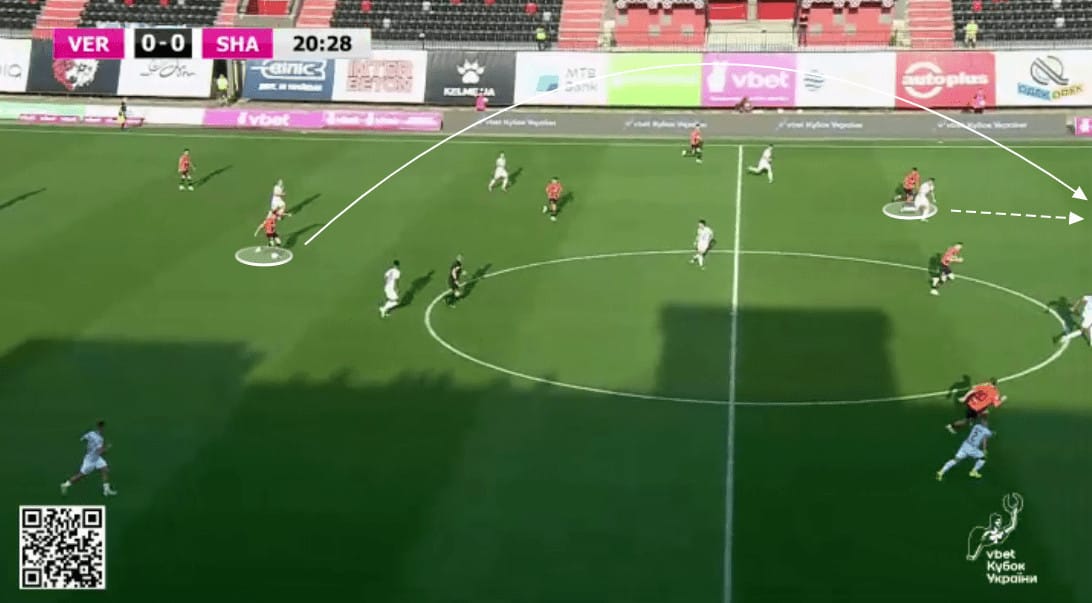
However, Kelsy uses his powerful stride to generate long runs. When a teammate has the angle to hit long passes in behind from deep, he can offer movements in the central channels or move wider to attack the FB blind side.
There is very positive what he can do in a static position: win the run throughout his pace and power, using his arms to clash cleanly with the opponent and then offering good touches on the run to receive. He’s aggressive in receiving these passes and runs more into a shooting angle rather than assisting.
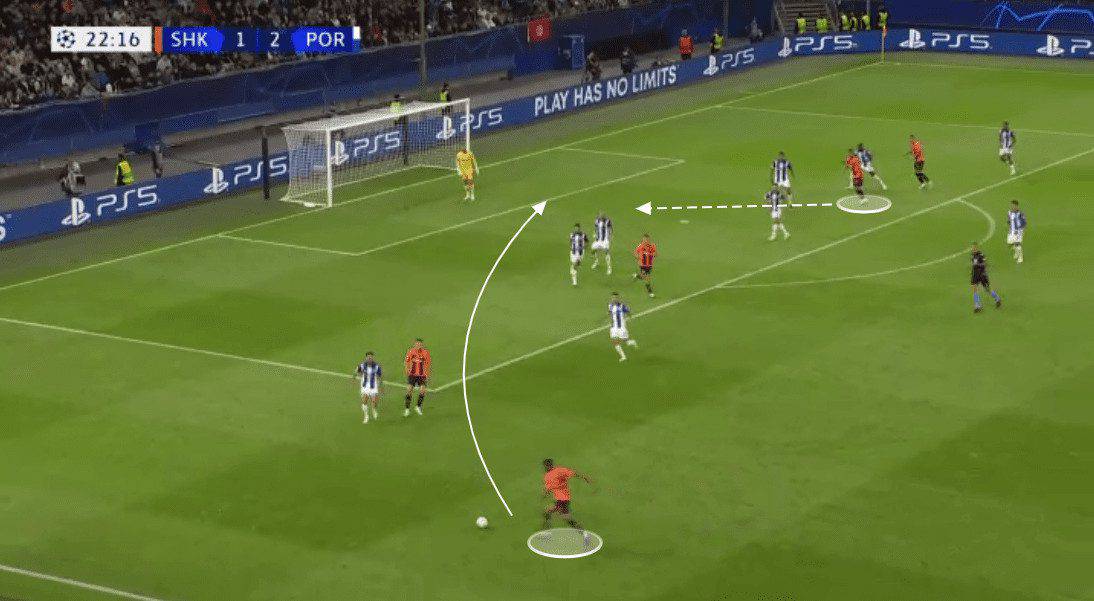
His movements inside the box are mainly his best ability. The capacity to make silent steps, appear free, attack intensely — actions that leave the opponent behind — his balance to stay on his feet through physical duels in the penalty area is excellent.
Kelsy shows an excellent reading of when the cross will be sent, so he times well his runs into the near or far post, especially looking to head powerfully lateral crosses. His incisive intentions make him normally find a free header each match inside the box, in a very threatening position. Considering his height, he’s a focal point for these executions and has to answer them positively.
He likes to vary his positioning, making it too difficult for the defender to know his next move. He can sometimes take some steps back and then do the run or make a decisive run from the far post to the penalty spot. A wide range of resources impact these deliveries.
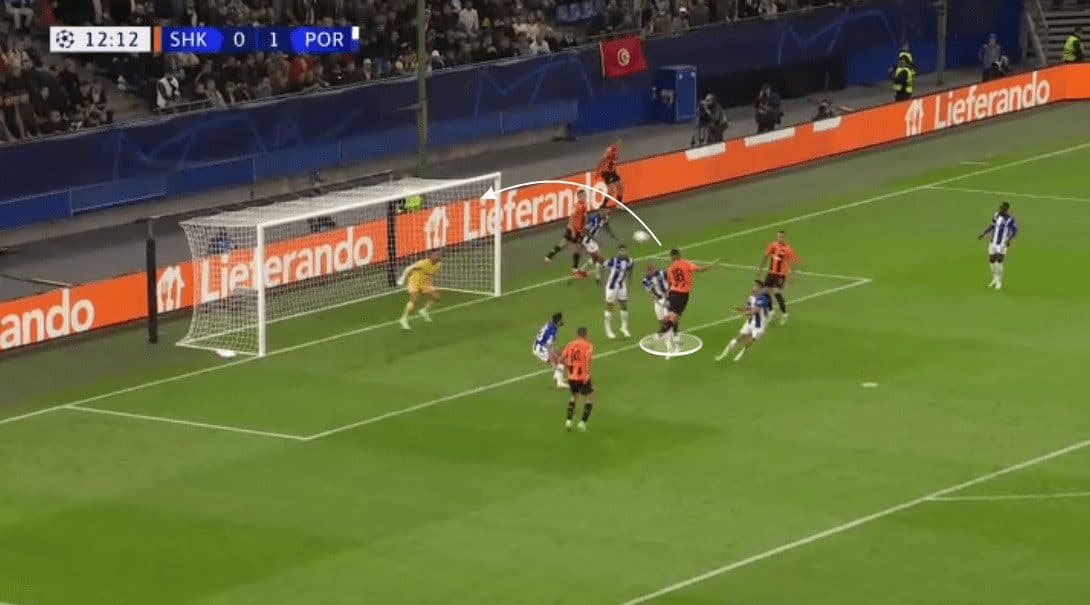
He debuted with a marvellous goal against Porto in the Champions League, from the first movement to the last, which won the aerial challenge against Pepe. To win a legendary centre-back, firstly, his jump has to be very big, and that was one thing Kelsy did. On the other hand, the first movement, feinting with a run into the far post but then making silent steps into the near one, was vital.
His heading technique was refined on this occasion, directing his teammate’s cross into a difficult angle for the goalkeeper. Kelsy’s movement opened the space, and his reaction to it, getting first into the ball than Pepe, was the crucial aspect of his goal.
The most critical tool in a striker is that all those movements, capacities with and without the ball, are well-ended with decent finishing technique. Kelsy shows that, with some things to improve, that could make him a really tough striker to play against if he continues to mature those issues.
When he’s activated in behind and has the time and space to run against the goalkeeper in 1v1 situations, Kelsy manages composure, executing fine shots, adjusting them typically into low corners. He’s a player who doesn’t show nervous body language or give extra touches to the ball while driving the ball to finish.
However, Shakhtar must constantly activate him with these types of runs and has to search for another way of scoring, especially inside the box. On the other hand, he’s also smart to finish back-passes, maintaining calm and adjusting well to first-time shots to score chances of high probability.
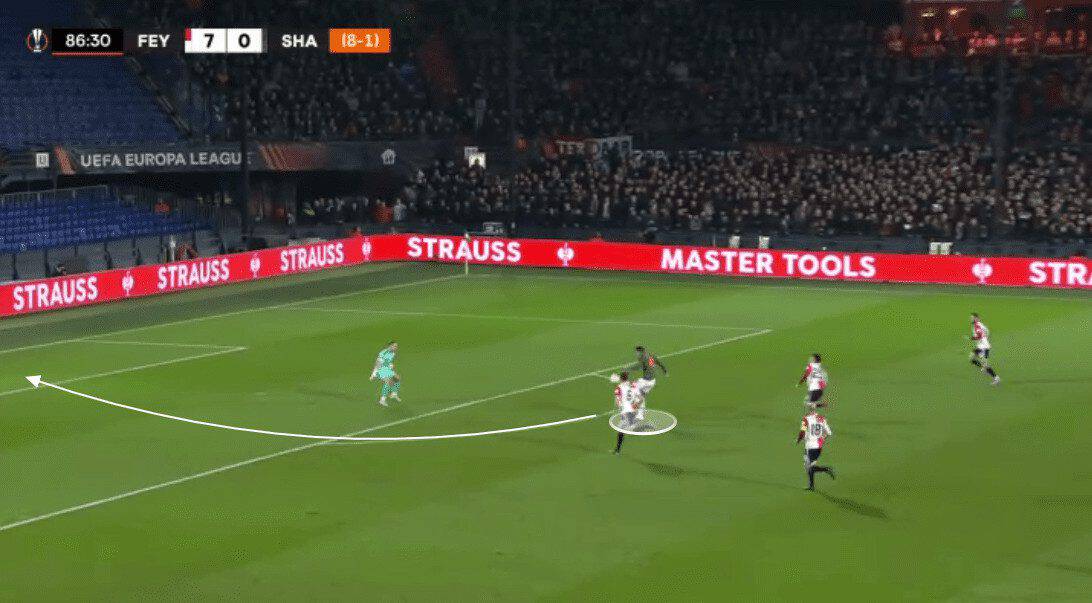
As mentioned, Kelsy’s header goal denotes one of his best capacities in the game: how he looks to appear accessible and receive high crosses. He’s always having a chance per game through this. His intensity helps him get crosses in one zone, between the far and near post, and in the penalty spot.
Besides making excellent off-the-ball movements to head these crosses, he’s not directing them in the best way. He could have scored 3 or 4 more goals last season if he wasn’t missing these chances. At times, he hits them with too much power but into the goalkeeper.
He has to work better on the direction because the jumps and runs to receive the ball are great, but if he can adjust headers into corners and lower them a bit, he’d be scoring many goals through it.
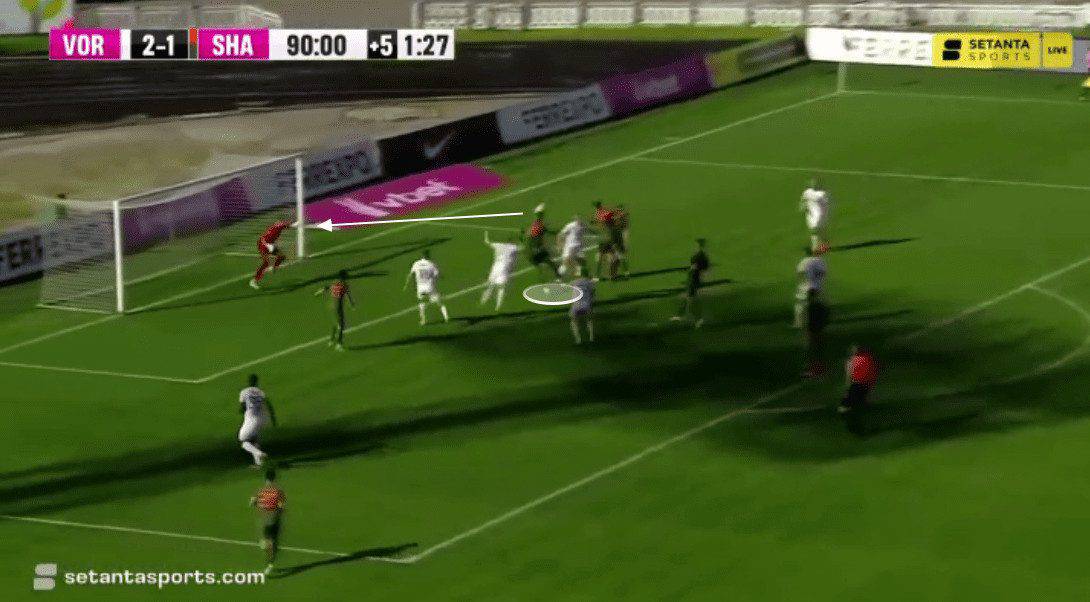
Standing at 193cm, Kelsy doesn’t stick too much to the profile. He’s a player with an excellent first touch and also shows acrobatic skills to save crosses ending too far from him.
Half-volleys, scissor kicks, and over-head kicks aren’t uncommon in Kelsy’s game. He’s brave enough to attempt them and normally finds the target with his left foot, which carries a lot of power and technique.
This is something unique in some footballers, and not all strikers can challenge for this long cross with this type of acrobatism. Besides not scoring yet from this type of shot, he has been very close, finding the target but with the rival goalkeeper parrying it away.
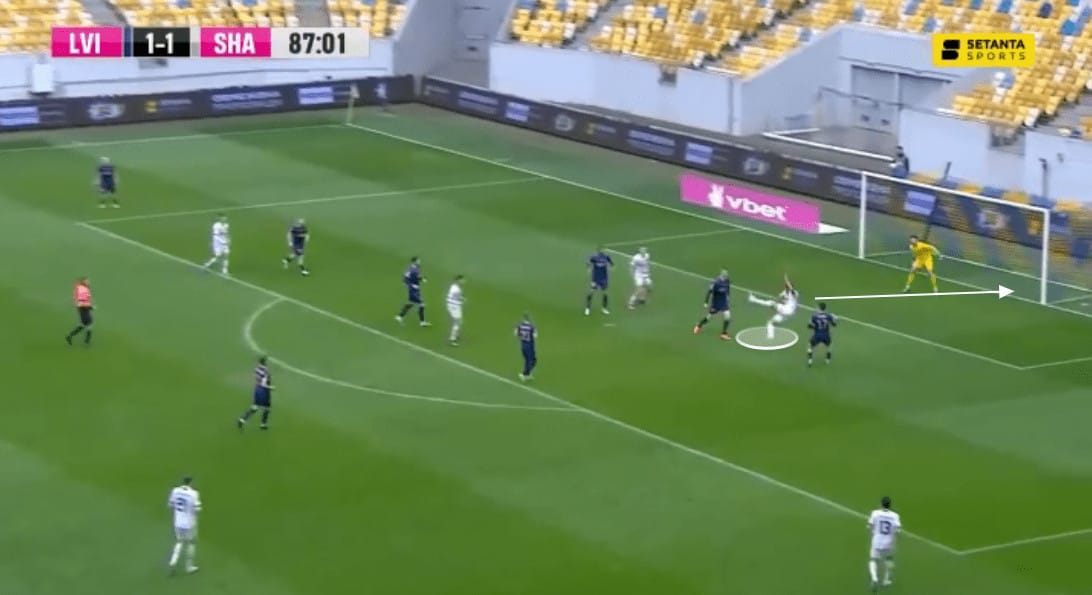
Another finishing technique Kelsy has shown lately is the volley when he runs short spaces behind the back line. Those chipped passes into the box from teammates are well-attacked off-the-ball by the Venezuelan. However, as in his touches at the edge of the box, he has to calm down the tempo.
The volleys he applies with his left foot aren’t hitting the target, and there are moments in these chances where he could control the ball and take a shot with a better angle to beat the goalkeeper than trying the spectacular.
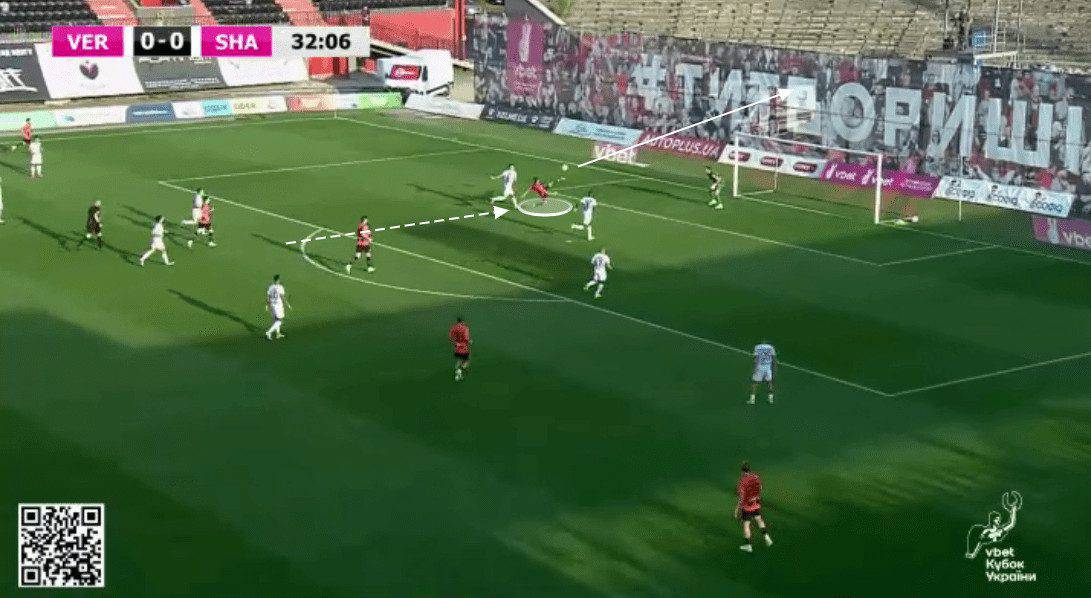
Those are things that a young striker tends to do, as well as work on his weaker foot, as he can be unpredictable when trying to finish in front of a defender, dribbling constantly to his strong left foot. Nevertheless, Kelsy is exciting for his multiple resources to impact. Short and long runs, feints in the box, headers, acrobatics, and composure in 1v1 situations. With specific issues to mature in terms of tempo and others, such as better directing the crosses with his head.
Comparisons to Salomón Rondón and top strikers in Europe
It is the moment of the piece when we can do what people love when talking about football and young players: Which player does he look like?
First, we will compare Rondón’s best season (for the writer) with Kevin Kelsy’s last season in Ukraine and Venezuela. As we pointed out at the start of this article, Kelsy has been one of the closest centre-forwards in Venezuela to Rondón for a lot of years, and it will be interesting to compare a bit from their game.
We will use data for this, firstly looking at Rondón’s Newcastle season, which was in 2018-19, where he scored 11 goals, including one against Manchester City and Liverpool.
This shot-map below shows glimpses of what can be Kelsy close to Rodnon, and also different. Some things that make them different in little detail is how much Rondón evolved into a player that looked to receive at the edge of the box to make a half-turn and shot. Kelsy, for his part, hasn’t shown much of these resources, looking to be more active inside or into the box.

To end with the Venezuelans comparisons, we generated a radar with Rondón’s season at River Plate and now Kelsy at Shakhtar, which can be seen some similarities, especially in the attacking outputs, with Rondón also having more the ball, as he plays in a different context with River Plate.
However, they are two very similar radars and are an excellent image for those waiting for Kelsy’s results in the short or mid-term to get included in the Venezuelan’s NT.
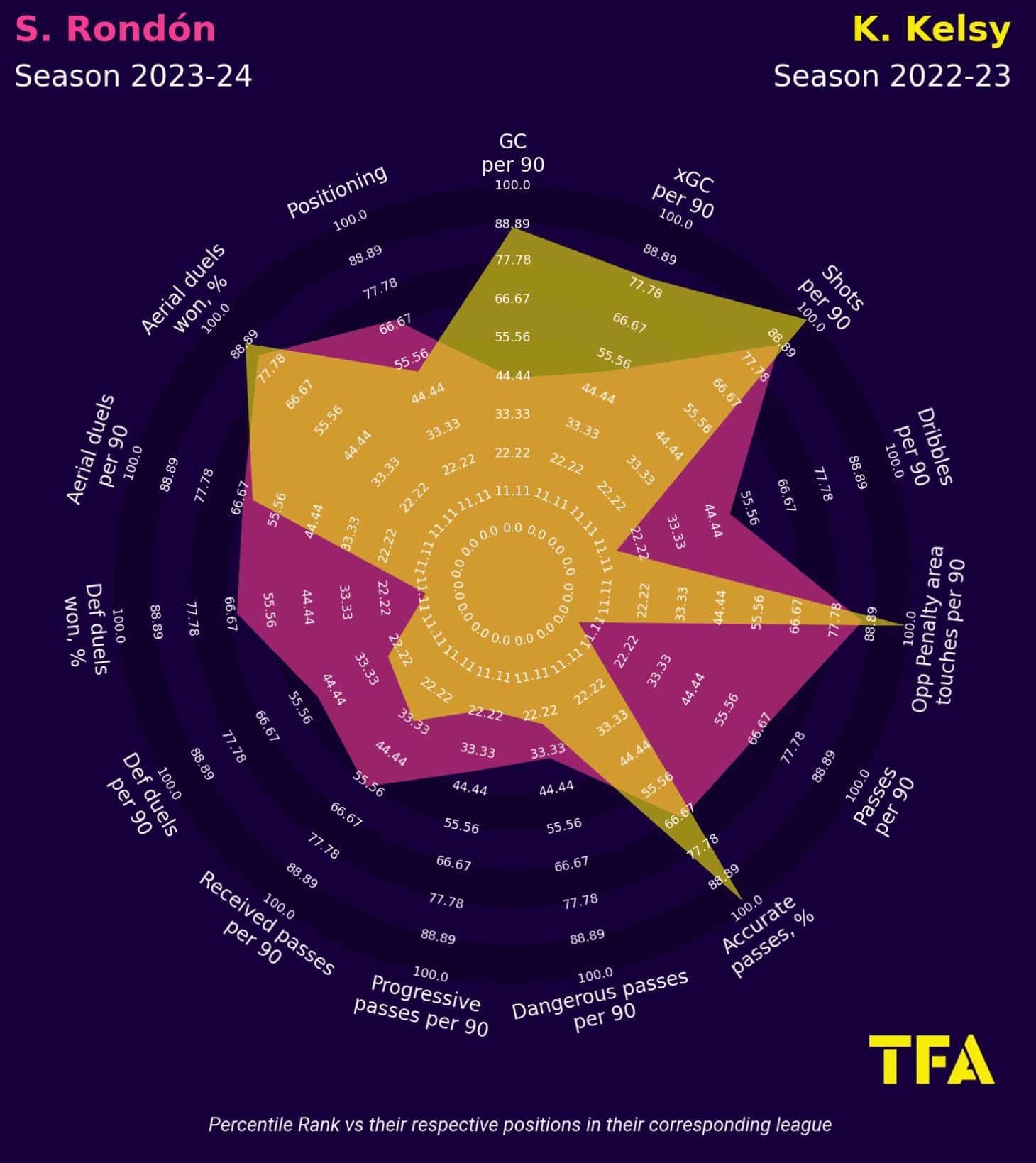
If you think we will use xGOLD, you guessed it right. As this writer did for David Martínez’s last month magazine piece, Kevin Kelsy will be compared to the best results in our xGOLD app, which searches similar players through data.
In the first spot of the list, we can find Victor Osimhen, the Nigerian striker who scored for fun with Napoli and helped them to win the league title last season, showing 84% similarities with Kevin Kelsy.
One of the attributes close to both is their varied and intense way of attacking crosses inside the box. Those silent steps to powerfully head/finish crosses are something that, in-game, can be found as similar attributes from them.
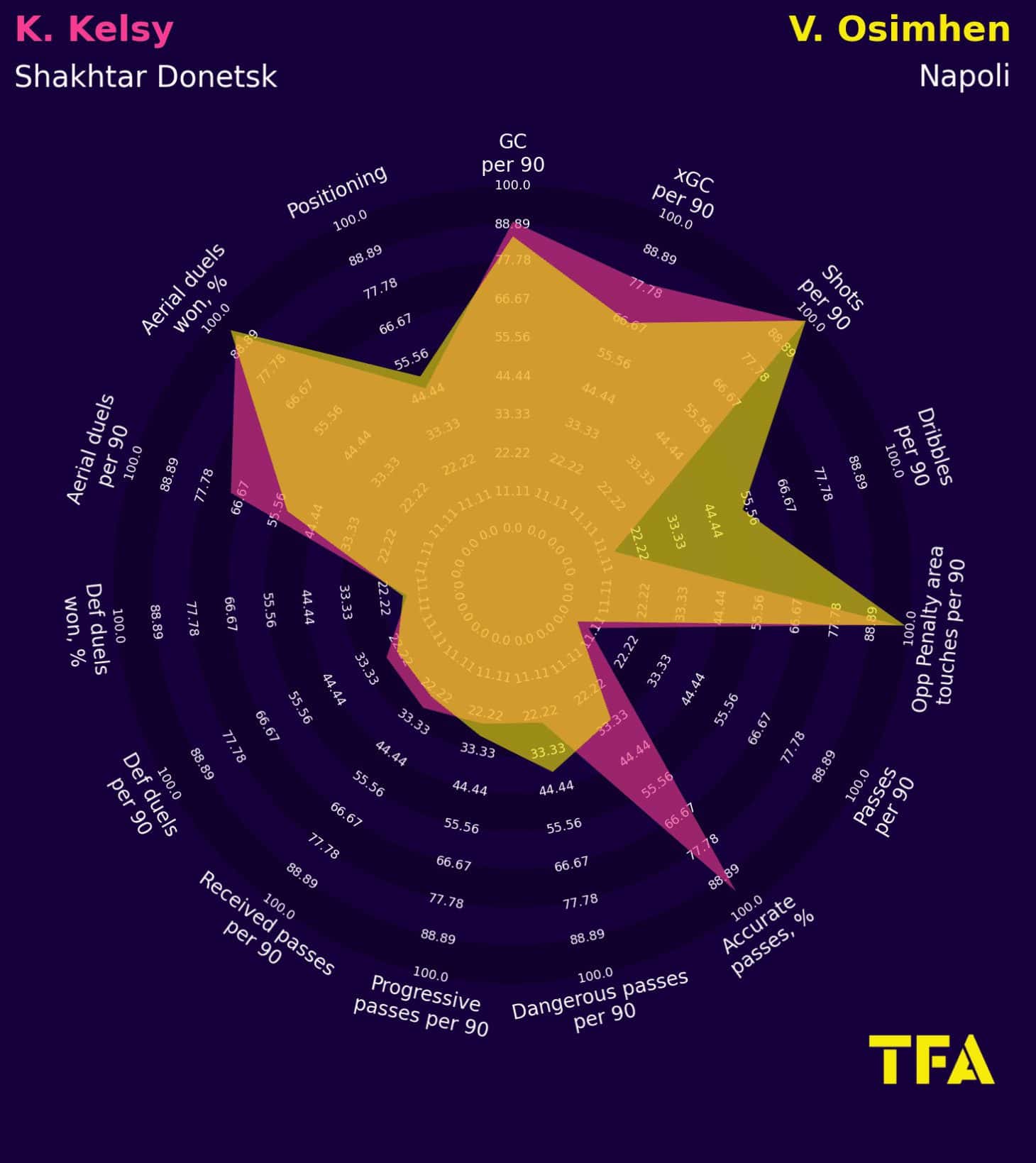
Down in the list, Ollie Watkins and Kevin Kelsy hit 82% similarities in xGOLD. Stats get them very close, as seen in the radar below.
Nevertheless, let’s consider the in-game characteristics Watkins and Kelsy show similarly. It is their variety and energy to make short and long runs into spaces behind. Besides Ollie being a faster player, the intentions and way of making those diagonal runs are very similar, even when both moved a bit wider to exploit FB’s blind side.
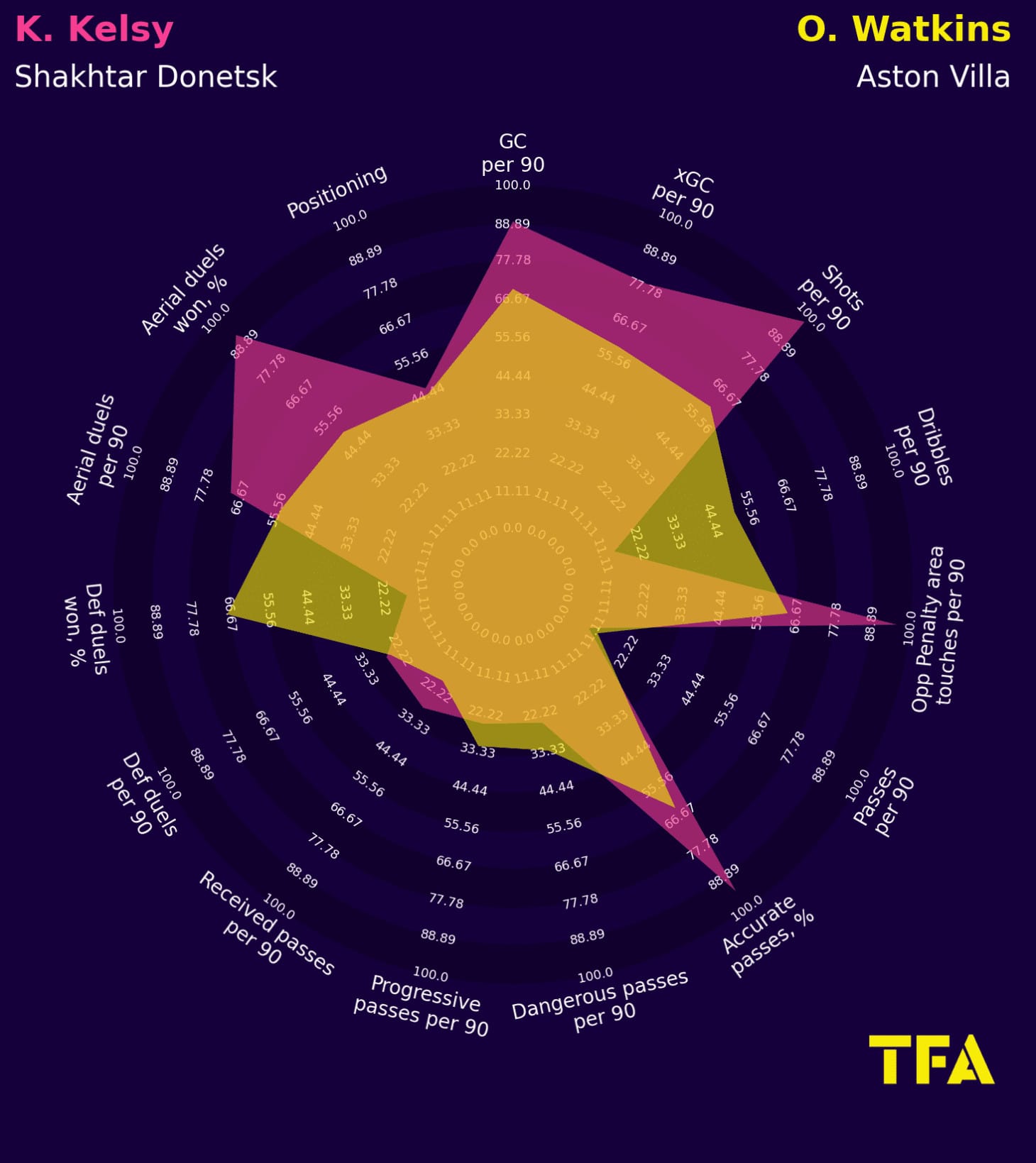
Conclusion
To conclude this piece, we must state that -again- comparisons aren’t our call to be the next Osimhen or Watkins, but we find curiosity about the statistical similarities between both players and touching the in-game close resources they applied to do damage to the opponent.
Kevin Kelsy is only 19 years old, playing at Shakhtar Donetsk and in the UEFA Champions League; he’s about to be called up with the Venezuelan National Team and keeps producing unforgettable moments for the local fans. With things to improve, the question is: Could he be the next big thing in the forward line for Venezuela?’ And the answer, for my part, is definitely. His attributes are essential for a qualification such as the South American and the physicality ´technique to make an impact at more prestigious leagues in Europe.
But football and players will always surprise us. And if you don’t believe me, ask Venezuelans about Ronald Vargas or Real Madrid fans about Eden Hazard.

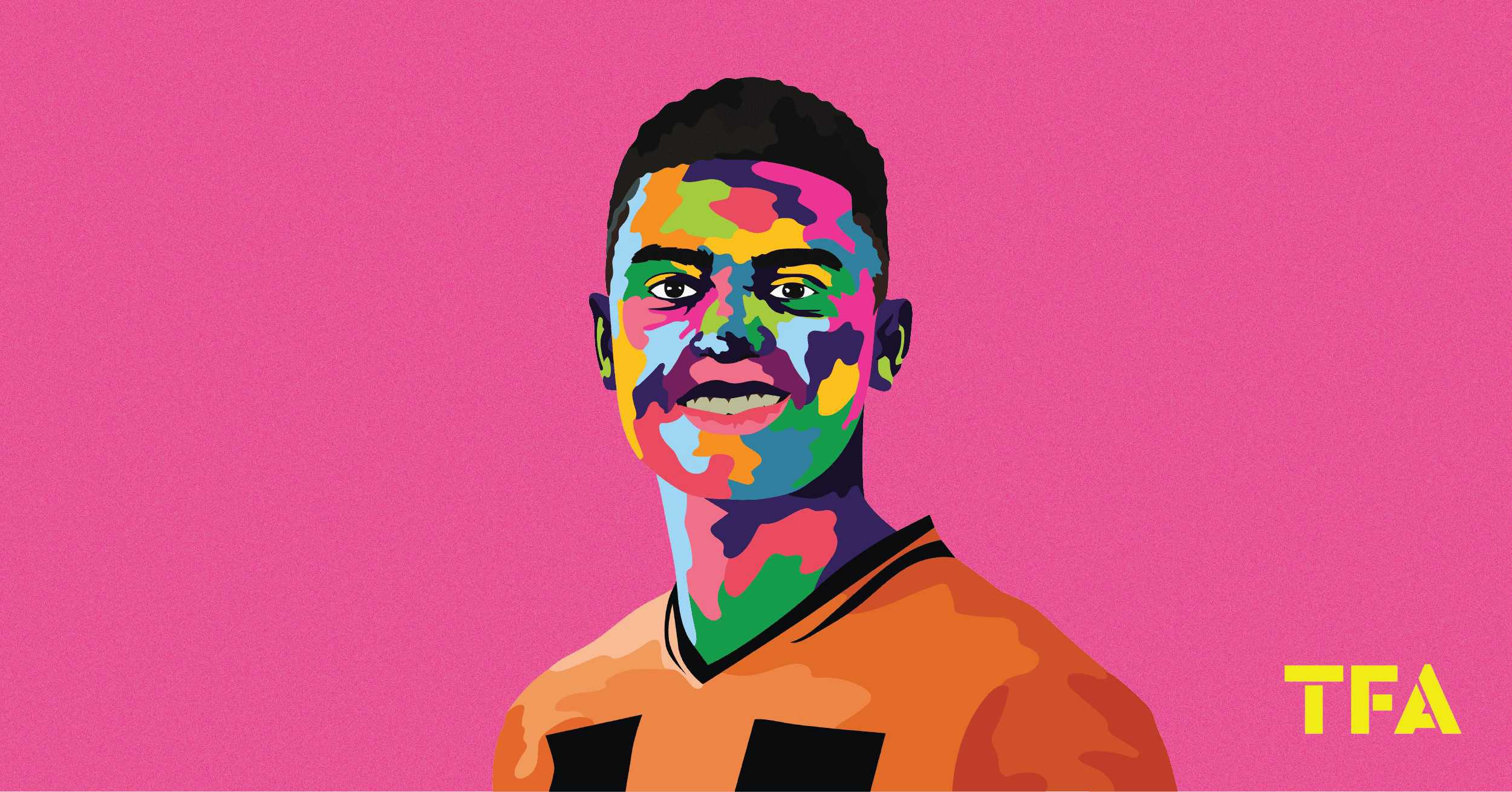




Comments